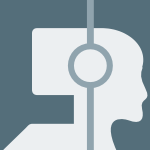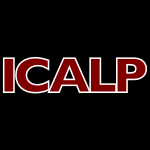12 papers:
 ICPR-2014-SuDAGSLLPLLT #automation #predict
ICPR-2014-SuDAGSLLPLLT #automation #predict- Automated Prediction of Glasgow Outcome Scale for Traumatic Brain Injury (BS, TAD, AKA, TG, TS, SL, CCTL, BCP, CKL, TYL, CLT), pp. 3245–3250.
 DHM-SET-2013-Lueder #how
DHM-SET-2013-Lueder #how- How Could This Have Happened? Unintentional Injuries of Young Children at Home (RL), pp. 348–354.
 DUXU-CXC-2013-DuckworthTSW #design #interactive
DUXU-CXC-2013-DuckworthTSW #design #interactive- Designing Co-located Tabletop Interaction for Rehabilitation of Brain Injury (JD, PRT, DS, PHW), pp. 391–400.
 ICPR-2012-ZhangFLZG #online
ICPR-2012-ZhangFLZG #online- Online ICP forecast for patients with traumatic brain injury (FZ, MF, LYL, ZZ, CG), pp. 37–40.
 MLDM-2012-KalpakisYHMSSS #analysis #permutation #predict #using
MLDM-2012-KalpakisYHMSSS #analysis #permutation #predict #using- Outcome Prediction for Patients with Severe Traumatic Brain Injury Using Permutation Entropy Analysis of Electronic Vital Signs Data (KK, SY, PFMH, CFM, LGS, DMS, TMS), pp. 415–426.
 DUXU-v1-2011-SpyridonisG #2d #3d #visualisation
DUXU-v1-2011-SpyridonisG #2d #3d #visualisation- 2D vs. 3D Pain Visualization: User Preferences in a Spinal Cord Injury Cohort (FS, GG), pp. 315–322.
 HCD-2011-TamuraYSU #development #smarttech
HCD-2011-TamuraYSU #development #smarttech- Development of a Wearable Airbag for Preventing Fall Related Injuries (TT, TY, MS, MU), pp. 335–339.
 ICPR-2010-SunB #3d #detection
ICPR-2010-SunB #3d #detection- 3D Filtering for Injury Detection in Brain MRI (YS, BB), pp. 2568–2571.
 HIMI-MTT-2007-MarucciLC #approach #classification #fuzzy #using
HIMI-MTT-2007-MarucciLC #approach #classification #fuzzy #using- Computer Classification of Injury Narratives Using a Fuzzy Bayes Approach: Improving the Model (HRM, MRL, HLC), pp. 500–506.
 HCI-CCAD-1999-Conway
HCI-CCAD-1999-Conway- Compensable injuries due to repetitive motion in computerized office work (FTC), pp. 961–965.
 HCI-CCAD-1999-SearsB #recognition #speech
HCI-CCAD-1999-SearsB #recognition #speech- Redesigning speech recognition for use by individuals with spinal cord injuries (AS, JBR), pp. 966–969.
 ICALP-1994-BuhrmanT #bound #on the
ICALP-1994-BuhrmanT #bound #on the- On the Cutting Edge of Relativization: The Resource Bounded Injury Method (HB, LT), pp. 263–273.
 ICPR-2014-SuDAGSLLPLLT #automation #predict
ICPR-2014-SuDAGSLLPLLT #automation #predict DHM-SET-2013-Lueder #how
DHM-SET-2013-Lueder #how DUXU-CXC-2013-DuckworthTSW #design #interactive
DUXU-CXC-2013-DuckworthTSW #design #interactive ICPR-2012-ZhangFLZG #online
ICPR-2012-ZhangFLZG #online MLDM-2012-KalpakisYHMSSS #analysis #permutation #predict #using
MLDM-2012-KalpakisYHMSSS #analysis #permutation #predict #using DUXU-v1-2011-SpyridonisG #2d #3d #visualisation
DUXU-v1-2011-SpyridonisG #2d #3d #visualisation HCD-2011-TamuraYSU #development #smarttech
HCD-2011-TamuraYSU #development #smarttech ICPR-2010-SunB #3d #detection
ICPR-2010-SunB #3d #detection HIMI-MTT-2007-MarucciLC #approach #classification #fuzzy #using
HIMI-MTT-2007-MarucciLC #approach #classification #fuzzy #using HCI-CCAD-1999-Conway
HCI-CCAD-1999-Conway HCI-CCAD-1999-SearsB #recognition #speech
HCI-CCAD-1999-SearsB #recognition #speech ICALP-1994-BuhrmanT #bound #on the
ICALP-1994-BuhrmanT #bound #on the









